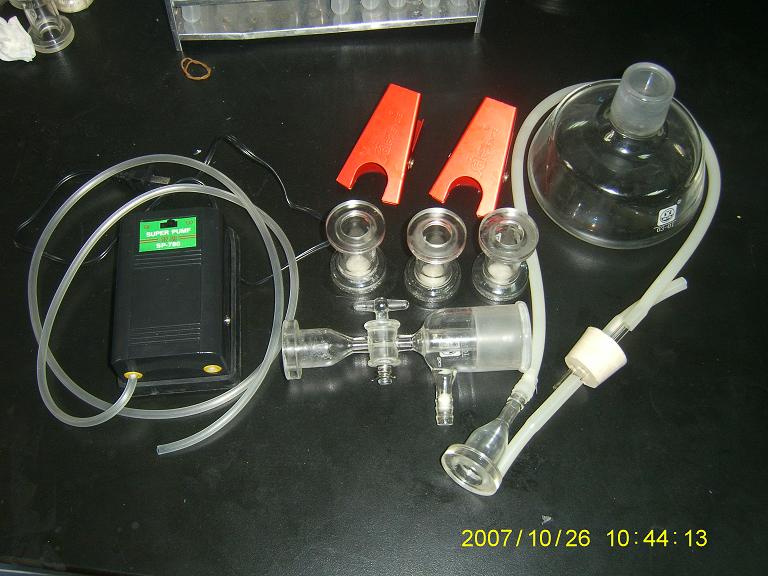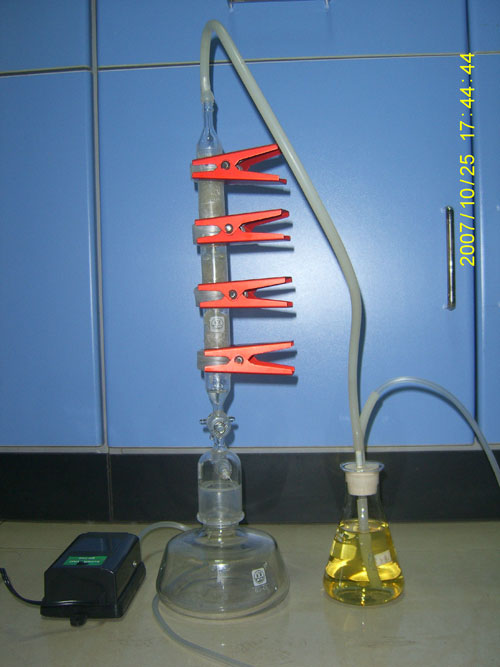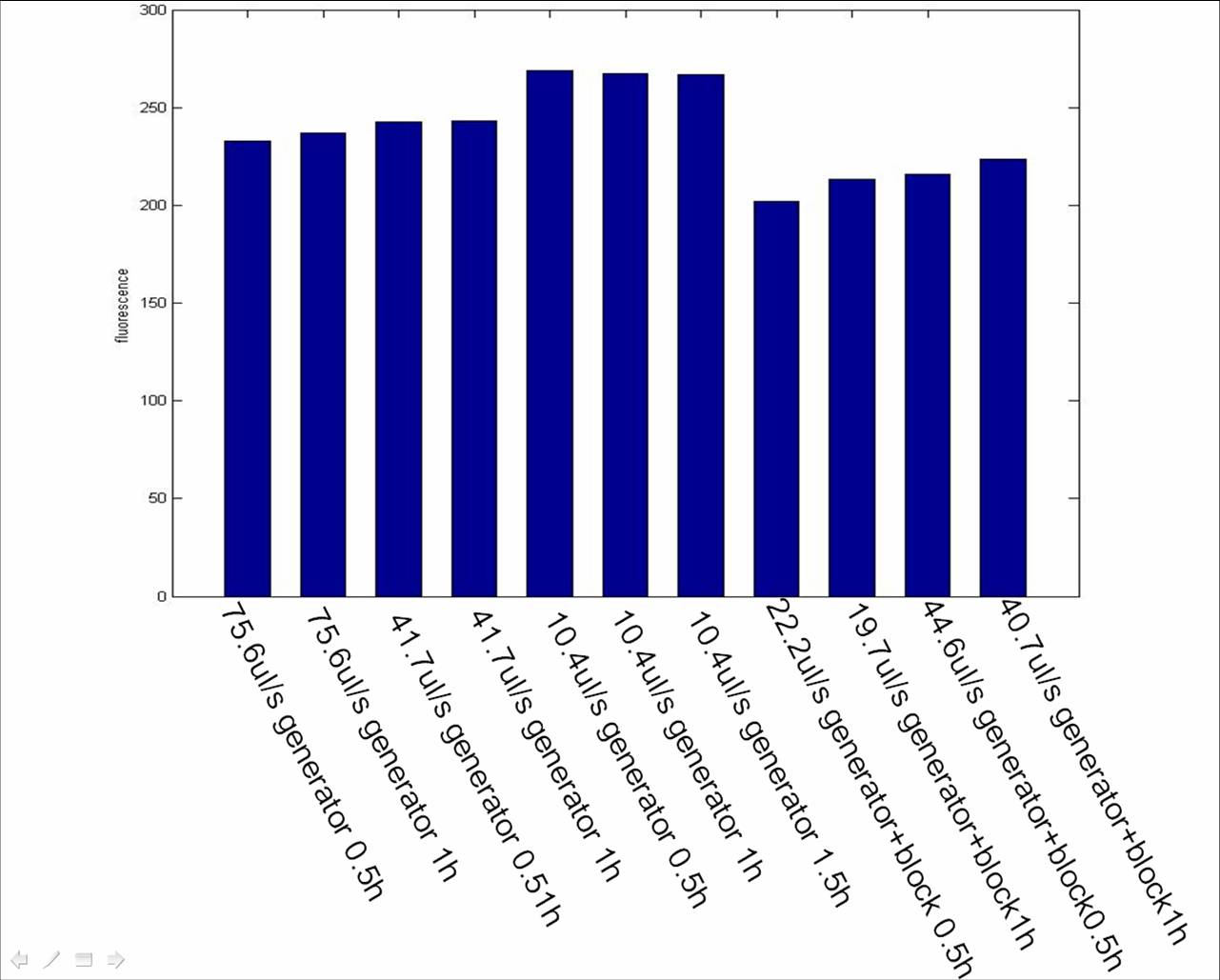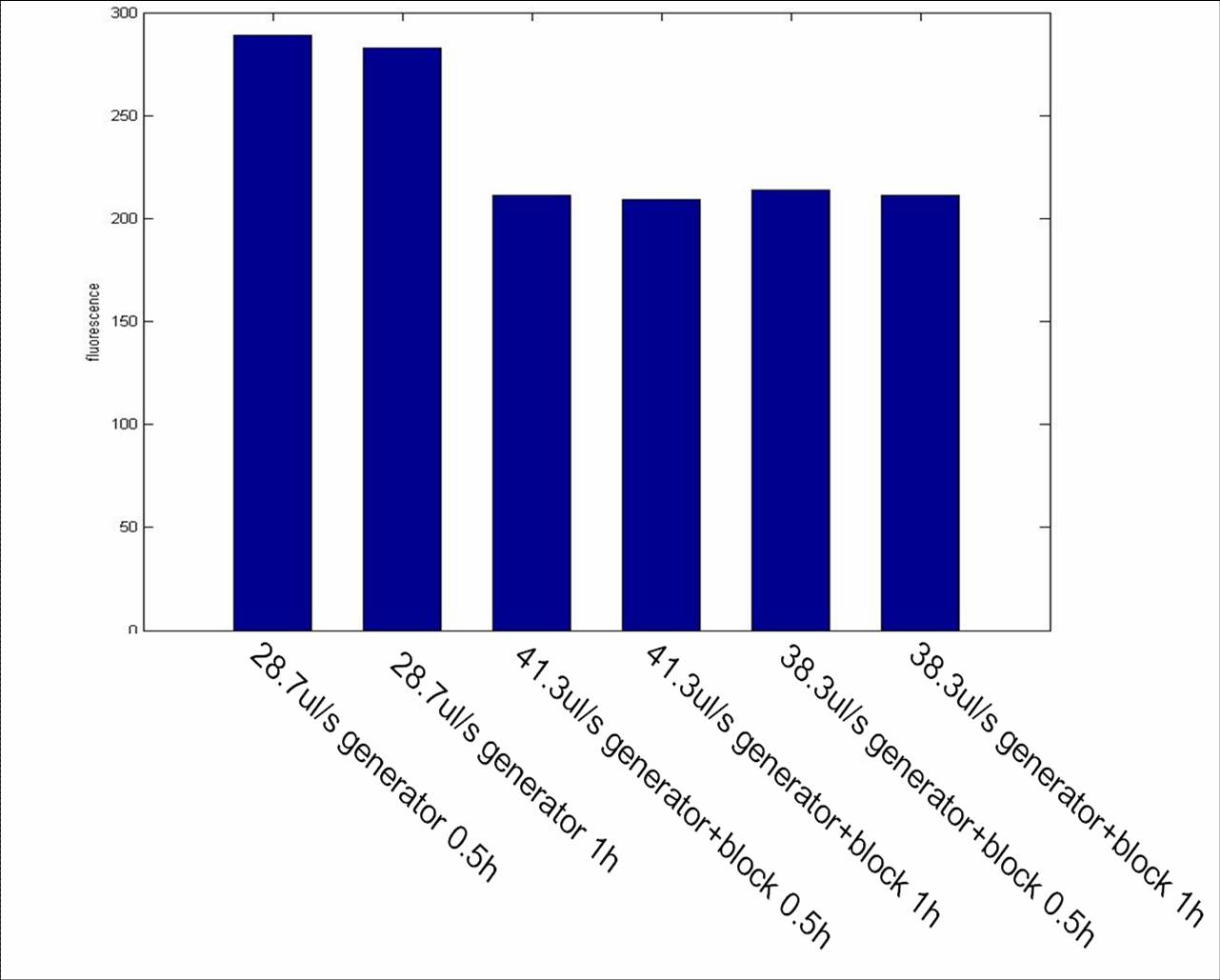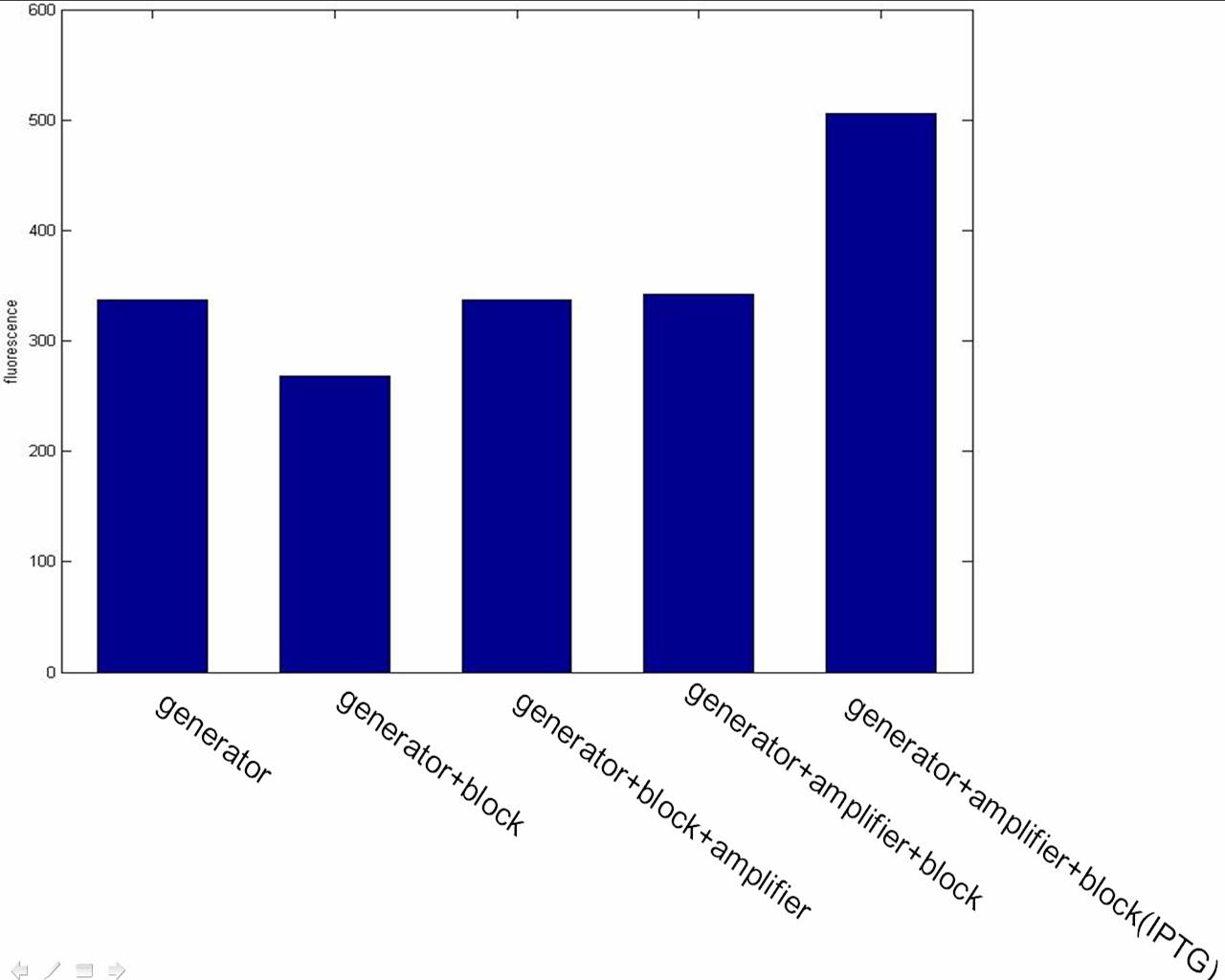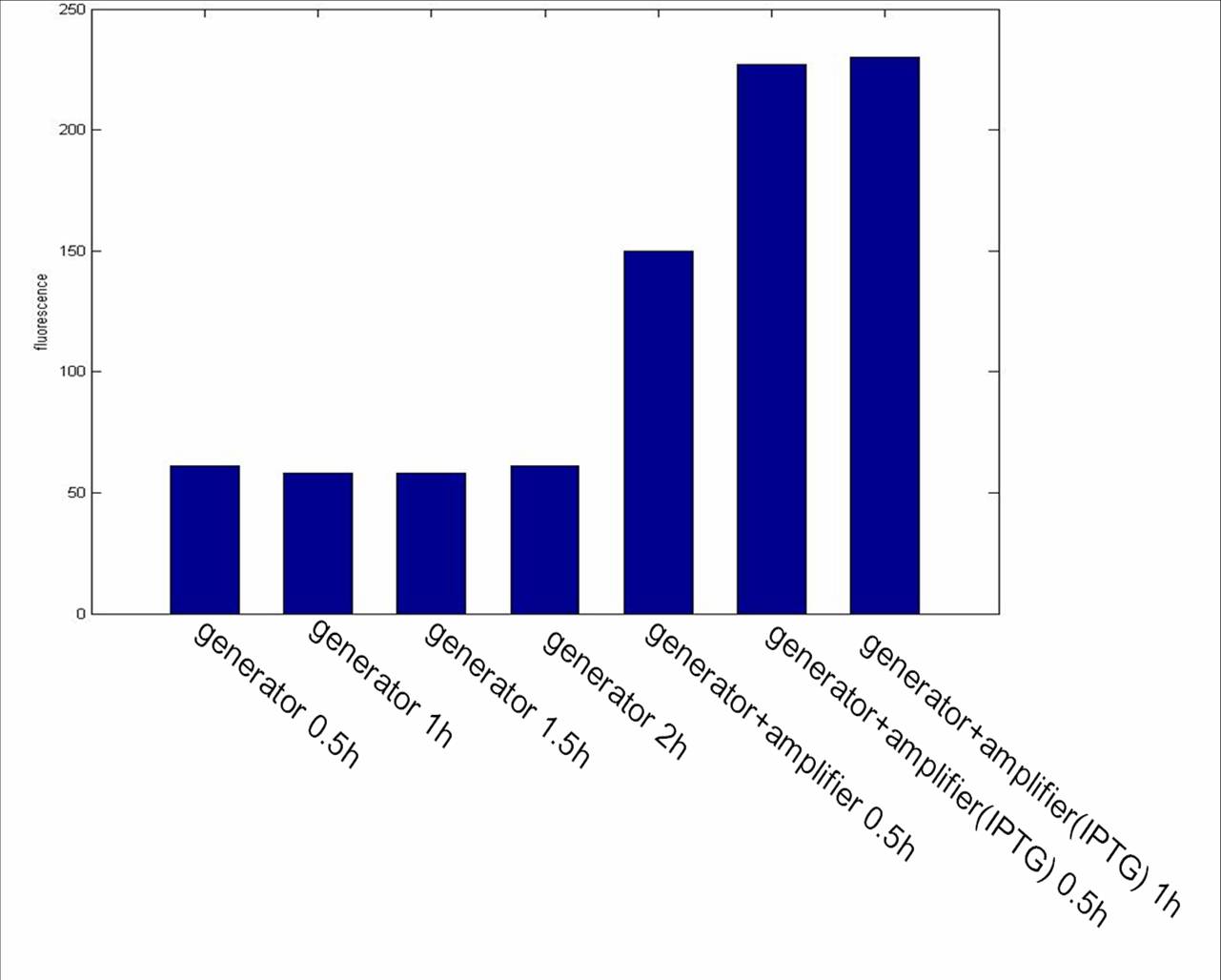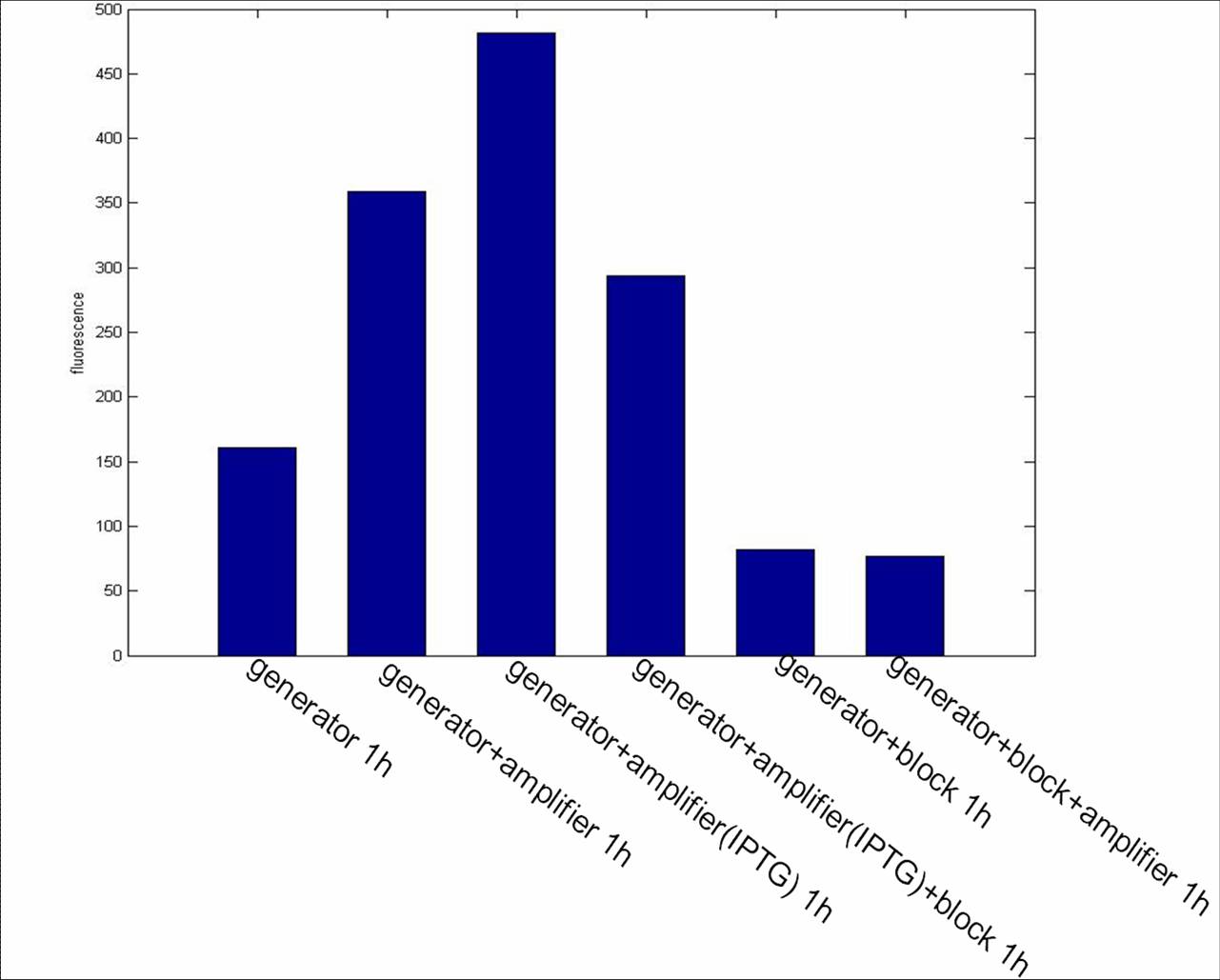Tianjin/DIODE/Experiment2
From 2007.igem.org
Sunlovedie (Talk | contribs) (→Introduction) |
Lovecarrot (Talk | contribs) (→Test Result) |
||
| (4 intermediate revisions not shown) | |||
| Line 1: | Line 1: | ||
{| | {| | ||
==Introduction== | ==Introduction== | ||
| - | + | The functions of immobilized cells in our particular designed equipment are also tested under different condition of diode and various periods after the column has been fulfilled. The last graph shows the very curve what we want, but since the limited time of us, its validity still require further parallel experiments to test. | |
==Equipment == | ==Equipment == | ||
| - | In order to imitate the actual diode and for fun, we construct an equipment by using the principles of chemical engineering. This 'diode' mainly consists of three consecutive hollow columns fulfilled with immobilized beads, at the | + | In order to imitate the actual diode and for fun, we construct an equipment by using the principles of chemical engineering. This 'diode' mainly consists of three consecutive hollow columns fulfilled with immobilized beads, at the boundaries of two of which is a ground glass surface permitting the flow of culture but not the immobilized beads. The top column is connected with a flask containing liquid culture(usually LB)by a hosepipe and the bottom column is tied to a valve which could control the rate of flux. The liquid culture is driven by a pump to pass through the three consecutive columns and under the condition of positive-biased, the AHL produced by the generator cells are brought to the second column filled with amplifier cells and then the third column filled with block cells. Under the condition of negative-culture the positions of amplifier cells and block cells are reversed. The solution passing through the third column is collected by a small container which is used for further analysis of AHL contents. |
<br> | <br> | ||
<br> | <br> | ||
[[Image:TJUcolumn.jpg|500px]] <br> | [[Image:TJUcolumn.jpg|500px]] <br> | ||
[[Image:TJUcolumn1.jpg|400px]]<br> | [[Image:TJUcolumn1.jpg|400px]]<br> | ||
| + | |||
==Test Result== | ==Test Result== | ||
| - | The | + | The data of fluorescence intensity are derived from the mixture of detector cells with samples extracted from the culture of different cells. The specific method is as shown [[Tianjin/DIODE/Experiment|here]].<br> |
Figure 1: | Figure 1: | ||
| - | We test the equipment | + | We test the equipment fulfulled with the generator cell and the block cell at different flux rate and different time after the alteration of flux rate.The result shows that the output concentration of AHL will decrease with the increase of the flux rates and the block cells could degrade the AHL produced by the generator cell,but the value is still a little higher than what we expected.<br> |
[[Image:tjuex301.jpg|500px]]<br> | [[Image:tjuex301.jpg|500px]]<br> | ||
<br> | <br> | ||
| Line 22: | Line 23: | ||
<br> | <br> | ||
<br> | <br> | ||
| - | Figure 3:We test the | + | Figure 3:We test the positive-biased and the negative-biased condition of the system .The result shows that the block cell successfully reduces the concentration of AHL. We can observe that the fluorescence value of positive-biased and negative-biased condition are almost the same which reveals that the amplifier cells are working at both condition .When we add IPTG, the fluorescence of positive-biased will reach a high value as we expected. <br> |
[[Image:tjuex303.jpg|500px]]<br> | [[Image:tjuex303.jpg|500px]]<br> | ||
<br> | <br> | ||
